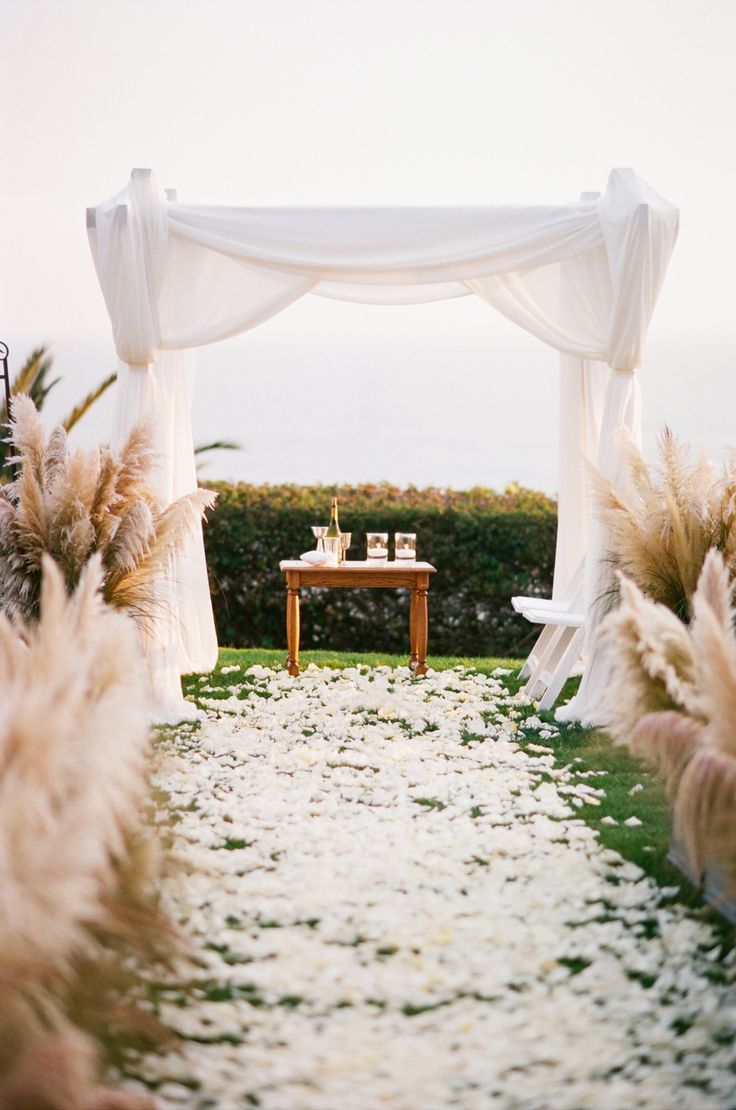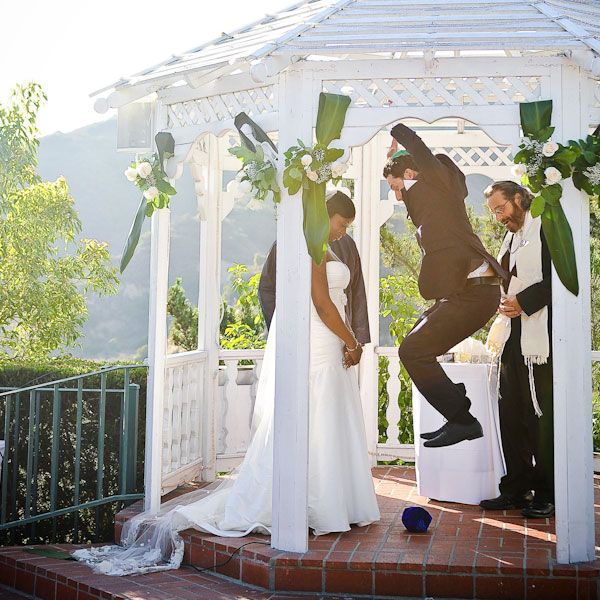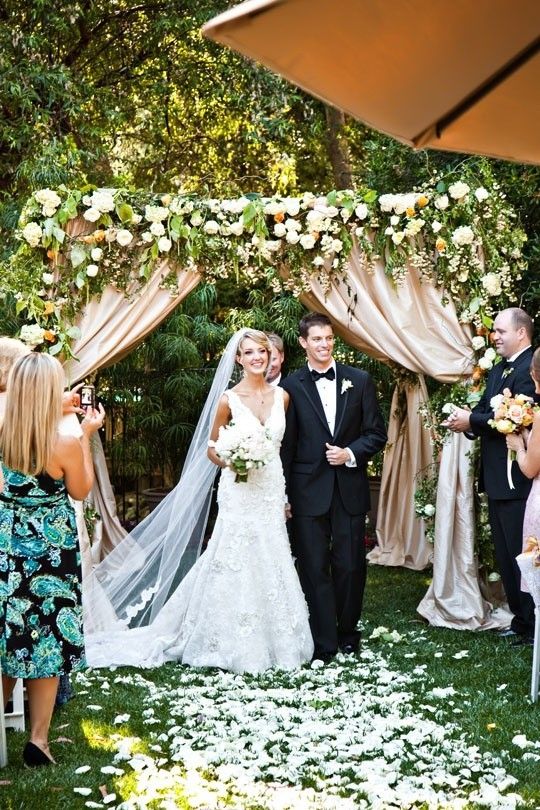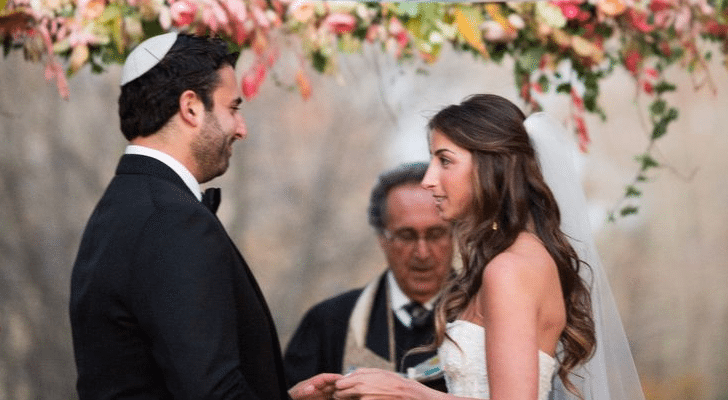As Tevya takes pains to teach us in Fiddler on the Roof, the Jewish faith is deeply steeped in tradition. So it comes as no surprise that the traditional Jewish wedding incorporates beautiful customs dating back thousands of years. Among these traditions are the signing of the Ketubah, the chuppah under which the couple stands, and any number of traditional dances. The rings exchanged by the couple also have deep and customary meanings.
The traditional wedding begins with the signing of the Ketubah. The Ketubah is akin to a contract. Revealing its ancient origins, it serves to assert that the bride’s not already married. It also details each couple’s expectations of each other in the marriage. Typically, the couple later frames this beautifully ornate document and gives it pride of place in their home, reminding them of their commitment.

After the bride and groom have both signed the Ketubah, the groom enjoys one last look at his bride before he lowers her veil and begins the wedding procession. This poignant moment stems from the Bible; specifically, the story of Jacob who was taken in and married to the wrong woman, a bait-and-switch made much easier since she was veiled.
Traditionally, the wedding party precedes the couple in the procession. Accompanied by their parents, the bride and groom then walk down the aisle, symbolizing the union of two families, not merely the bride and groom. The procession ends under a time-honored canopy known as a chuppah, which symbolizes God’s presence and his intention to shelter the couple.
The couple then exchanges their wedding vows, after which the rabbi recites seven traditional blessings. Subsequently, the groom crushes a wine glass with his foot, a ritual that symbolizes both human weakness and the suffering that Jewish ancestors endured as a result of their faith. With this, the rabbi offers a final blessing, and the ceremony ends.
Jewish weddings, unlike many other traditional weddings, typically do not include a receiving line. Instead, tradition holds that the
bridal couple enjoy a few minutes of private time right after the wedding. Many guests of the faith will honor this custom by leaving
the ceremony straightaway and saving their well-wishes for the reception. In olden days, this private time was a chance for the couple to consummate the marriage — but today, it’s more of an opportunity to reflect on the ceremony and the start of the couple’s life together.

Few people would be surprised to learn that even the rings exchanged in a Jewish wedding are traditional symbols. Custom dictates that the bride and groom exchange simple rings, devoid of jewels, embellishments or engravings. With no way to tell its end from its beginning, the ring becomes a symbol of timeless love with no start and no finish. Not only does it symbolize the newlyweds’ love for each other, it also represents God’s love for his chosen people as well.
What other features distinguish a Jewish reception? The dancing! One of the most vibrant is a traditional dance called the Hora. In the Hora, the bride and groom sit on chairs hoisted into the air by guests, and clutch a handkerchief between them. In a clear and exuberant way, this dance celebrates their union.

If the wedding includes the last unmarried daughter or son of one of the parents, a few more time-honored dances may be in the offing. For example, if the bride is the last in her family to marry, she and her sisters may honor the mother with a tradition known as Krenzi, in which they crown their mother with flowers and perform a dance of honor.
What’s more, if either bride or groom is the last of their family to marry, both parents will be honored with a Mizinke dance, in
which all guests surround the parents and shower them with flowers and praise.
As you can see, the Jewish faith is one that brims with history and traditions, many of which couples of the Jewish faith enjoy incorporating into their wedding day. As it turns out, it’s often these traditions that create defining moments in the celebration, lending an aura of deep and historical meaning.
See Also


